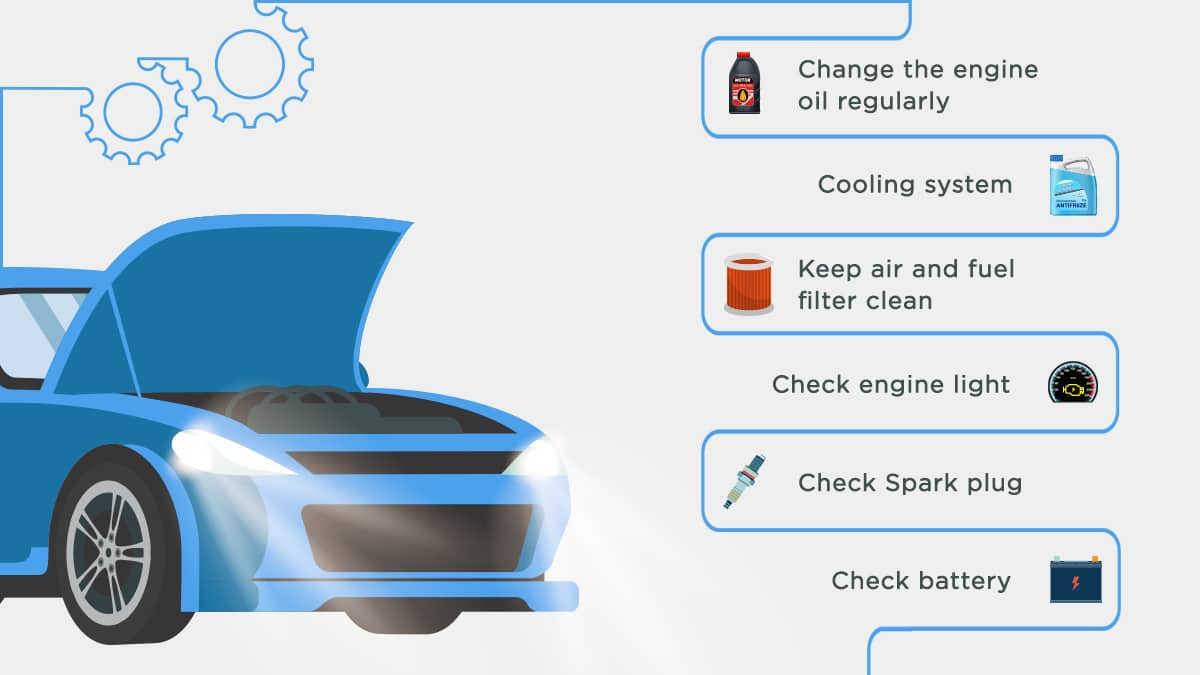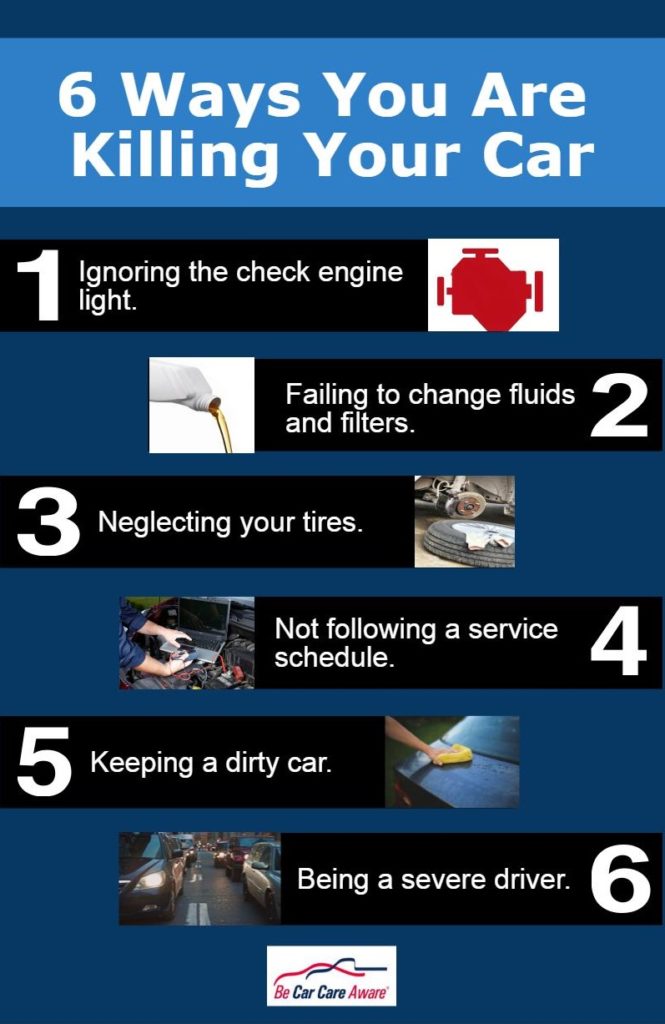Regular maintenance and timely repairs are essential to keep your car in top condition. Follow the manufacturer’s maintenance schedule diligently.
Taking care of your car not only ensures its longevity but also enhances its performance and safety. Regular oil changes, tire rotations, and brake inspections are crucial. Clean your car inside and out to prevent rust and maintain its aesthetic appeal.
Monitor fluid levels, including coolant, transmission, and brake fluids, to avoid potential problems. Pay attention to any unusual noises or vibrations, as these could indicate underlying issues. Proper tire maintenance, including checking tire pressure and alignment, improves fuel efficiency and handling. Taking these steps will keep your vehicle running smoothly and reliably for years to come.
Regular Maintenance
Regular maintenance is crucial to keep your car running smoothly. It ensures safety, boosts performance, and prolongs the lifespan of your vehicle. Here, we’ll discuss essential maintenance tasks like oil changes and checking fluid levels.
Oil Changes
Oil changes are vital for your car’s engine health. Fresh oil lubricates engine parts and reduces friction. Dirty oil can cause severe damage. Follow these steps for a proper oil change:
- Warm up the engine for a few minutes.
- Turn off the engine and place a pan under the drain plug.
- Remove the drain plug and let the oil flow out.
- Replace the oil filter with a new one.
- Put the drain plug back and pour in new oil.
- Check the oil level with the dipstick.
Refer to your car’s manual for the recommended oil type and change intervals.
Fluid Levels
Maintaining proper fluid levels is essential for your car’s performance. Low fluid levels can lead to serious problems. Regularly check these fluids:
- Coolant: Keeps the engine from overheating.
- Brake Fluid: Ensures your brakes work correctly.
- Transmission Fluid: Keeps the transmission running smoothly.
- Power Steering Fluid: Makes steering easier.
- Windshield Washer Fluid: Helps keep the windshield clean.
Here’s a handy table for quick reference:
| Fluid | Check Frequency | Signs of Low Level |
|---|---|---|
| Coolant | Every Month | Engine Overheating |
| Brake Fluid | Every 3 Months | Spongy Brakes |
| Transmission Fluid | Every 6 Months | Gear Shifting Issues |
| Power Steering Fluid | Every 3 Months | Hard Steering |
| Windshield Washer Fluid | Every Month | Dirty Windshield |
Regularly checking and topping off these fluids will keep your car in optimal condition.

Credit: www.policybazaar.com
Tire Care
Taking care of your car’s tires is crucial for safety and performance. Tires are the only contact point between your car and the road. Proper tire care ensures your car runs smoothly and efficiently. In this section, we will discuss two important aspects of tire care: Tire Pressure and Tire Rotation.
Tire Pressure
Maintaining the correct tire pressure improves fuel efficiency and safety. Under-inflated tires can wear out faster and may even lead to blowouts. Over-inflated tires can cause a rough ride and uneven tire wear.
- Check tire pressure at least once a month.
- Use a reliable tire pressure gauge.
- Refer to your car’s manual for the recommended pressure.
- Check pressure when tires are cold.
Here is a quick guide to proper tire pressure:
| Car Type | Recommended Tire Pressure (PSI) |
|---|---|
| Sedan | 30-35 |
| SUV | 35-40 |
| Truck | 40-45 |
Tire Rotation
Tire rotation helps in even tire wear. This extends the life of your tires and improves performance. Rotating tires involves moving them from one position to another.
- Rotate tires every 6,000 to 8,000 miles.
- Follow the rotation pattern recommended by your car’s manual.
- Front tires may wear out faster than rear tires.
- Regular rotation promotes even tire wear.
Here are common tire rotation patterns:
| Pattern | Details |
|---|---|
| Forward Cross | Move front tires to rear; rear to front in a cross pattern. |
| X-Pattern | Move front left to rear right and vice versa. |
| Rearward Cross | Move rear tires to front; front to rear in a cross pattern. |
Proper tire care is vital for your car’s safety and performance. Always monitor tire pressure and rotate your tires regularly.
Brake System
Your car’s brake system is crucial for safety. It helps you stop the car quickly. Maintaining it ensures you avoid accidents. Let’s look at key parts of the brake system.
Brake Pads
Brake pads are vital for stopping your car. They press against the brake disc to slow down your car.
- Check brake pads every 10,000 miles.
- Replace them if they are less than 3mm thick.
- Listen for squeaking sounds when braking.
| Brake Pad Condition | Action Required |
|---|---|
| Thicker than 3mm | No replacement needed |
| Thinner than 3mm | Replace immediately |
Regular checks ensure your brake pads function well. This keeps you safe on the road.
Brake Fluid
Brake fluid transfers the force from your foot to the brakes. Keeping it at the right level is essential.
- Check brake fluid level monthly.
- Use a clean cloth to wipe the reservoir cap.
- Top it up if the level is low.
Always use the brake fluid recommended in your car’s manual. Change it every two years for optimal performance.
Inspect the color of your brake fluid. If it looks dark, replace it. Clean brake fluid ensures your brakes respond quickly.
Battery Health
Maintaining your car’s battery health is crucial. A healthy battery ensures your car starts without issues. Regular checks and maintenance can extend its life.
Cleaning Terminals
Keeping battery terminals clean prevents corrosion. Corrosion can block the flow of electricity. Use a wire brush to scrub the terminals. Ensure the car is off before cleaning. Apply a mixture of baking soda and water. Rinse with clean water and dry with a cloth.
Checking Voltage
Regularly checking battery voltage helps monitor its health. Use a digital multimeter for accuracy. Set the multimeter to 20 DC volts. Connect the red lead to the positive terminal. Connect the black lead to the negative terminal. A healthy battery should read between 12.4 and 12.7 volts.
| Battery Condition | Voltage Reading |
|---|---|
| Fully Charged | 12.7 volts or higher |
| Good Condition | 12.4 – 12.7 volts |
| Needs Charging | 12.0 – 12.4 volts |
| Replace Battery | Less than 12.0 volts |
Check the voltage monthly to ensure battery health. If voltage is low, charge the battery immediately.
Engine Performance
Maintaining your car’s engine performance is crucial for a smooth ride. A well-maintained engine ensures your car runs efficiently and saves on fuel costs. Below, we’ll explore two important aspects: air filters and spark plugs.
Air Filters
Air filters keep dirt and debris out of your engine. A clean air filter improves fuel efficiency and performance. It also extends the engine’s life.
- Check your air filter every 12,000 miles.
- Replace it if it’s dirty or clogged.
- A clean air filter improves acceleration by up to 11%.
Consider using a high-quality air filter. It provides better filtration and lasts longer.
Spark Plugs
Spark plugs ignite the air-fuel mixture in your engine. They play a key role in engine performance and fuel efficiency.
- Inspect spark plugs every 30,000 miles.
- Replace them if they are worn or damaged.
- Good spark plugs ensure smooth engine starts and acceleration.
Use the recommended type of spark plugs for your car. This ensures optimal performance.
| Component | Inspection Interval | Replacement Interval |
|---|---|---|
| Air Filters | 12,000 miles | As needed |
| Spark Plugs | 30,000 miles | As needed |
Maintaining these components helps your engine run efficiently. It also prolongs the life of your car.

Credit: www.buzzfeed.com
Cooling System
Your car’s cooling system is crucial. It helps your engine stay cool. A well-maintained cooling system prevents overheating. Overheating can cause serious damage to your car. Keep your cooling system in top shape. Let’s explore some key aspects.
Radiator Maintenance
Your radiator is the heart of the cooling system. It transfers heat away from the engine. Check the radiator for leaks regularly. Look for any signs of corrosion. Make sure the radiator fins are clean. Use a soft brush to clean them.
A dirty radiator can block airflow. This leads to overheating. Check the radiator cap too. It should fit tightly. Replace the cap if it looks worn out. Use the right type of coolant for your radiator. Different radiators require different coolants.
Coolant Levels
Coolant keeps your engine at the right temperature. Check your coolant levels often. The coolant reservoir has markings. Fill the coolant to the “Full” line. Don’t overfill it.
Use the right mix of water and coolant. Usually, a 50/50 mix is ideal. Use a funnel to avoid spills. Never open the radiator cap when the engine is hot. Hot coolant can cause burns.
Check the coolant color. It should be bright and clear. If it looks rusty or dirty, replace it. Check your car manual for the right coolant type. Always follow the manufacturer’s recommendations.
| Task | Frequency |
|---|---|
| Check Radiator for Leaks | Monthly |
| Clean Radiator Fins | Every 3 Months |
| Check Coolant Levels | Weekly |
| Replace Coolant | Every 2 Years |
Transmission Care
Taking care of your car’s transmission is very important. The transmission helps your car move smoothly. Without proper care, it can lead to big problems. Below are some tips to keep your transmission in good shape.
Transmission Fluid
Transmission fluid keeps the parts of the transmission cool and lubricated. It is essential to check the transmission fluid regularly.
- Check the fluid level using the dipstick.
- Make sure the fluid is clean and not dirty.
- Top up or change the fluid if needed.
| Transmission Type | Fluid Change Interval |
|---|---|
| Automatic | Every 30,000 miles |
| Manual | Every 60,000 miles |
Signs Of Wear
Recognizing signs of wear can save you from major repairs. Here are some signs to watch for:
- Strange Noises: Grinding or whining sounds can indicate a problem.
- Slipping Gears: If the gears slip, it might need attention.
- Delayed Shifting: A delay in shifting gears is a warning sign.
- Fluid Leaks: Red or brown fluid spots under the car mean trouble.
Exterior Upkeep
Taking care of your car’s exterior is important. A clean and well-maintained car looks good and lasts longer. Follow these steps to keep your car shining.
Washing
Washing your car regularly is essential. Dirt and grime can damage the paint. Follow these steps to wash your car:
- Use a mild car soap.
- Wash your car in the shade.
- Use a soft sponge or cloth.
- Rinse thoroughly with clean water.
- Dry with a microfiber towel.
Washing your car once a week is ideal. This keeps it free of dirt and debris.
Waxing
Waxing your car protects the paint. It adds a shiny layer and repels water. Here’s how to wax your car:
- Choose a high-quality car wax.
- Apply a thin layer with a soft cloth.
- Let the wax dry for a few minutes.
- Buff with a clean, dry cloth.
Waxing your car every three months is best. This keeps the paint protected and shiny.
| Step | Frequency |
|---|---|
| Washing | Weekly |
| Waxing | Every 3 months |
Interior Cleanliness
Keeping the interior of your car clean is essential for comfort and resale value. A clean interior makes your driving experience more enjoyable and can help maintain your car’s condition. Below are some tips on how to maintain your car’s interior cleanliness.
Vacuuming
Vacuuming is crucial for removing dirt and debris from your car’s interior. Start by removing all floor mats. Shake them outside to get rid of loose dirt. Use a vacuum cleaner with a brush attachment to clean the mats thoroughly.
Next, vacuum the car seats, focusing on the seams where dirt often hides. Don’t forget to vacuum the car floor, reaching under the seats and into the corners. Use a crevice tool to get into tight spaces.
A clean car floor and seats make your car look and feel fresh. Regular vacuuming prevents dirt buildup and keeps your car smelling nice.
Dashboard Care
The dashboard is a focal point of your car’s interior. Dust and dirt can accumulate quickly. Use a microfiber cloth to dust off the dashboard. A microfiber cloth attracts dust better and won’t scratch the surface.
For deeper cleaning, use a mild cleaner suitable for your dashboard material. Spray the cleaner on the cloth, not directly on the dashboard. Wipe down all surfaces, including the steering wheel and center console.
Avoid using harsh chemicals that can damage the dashboard. Regular cleaning keeps your dashboard looking new and prevents long-term damage.
Taking care of your car’s interior cleanliness is simple but effective. Regular vacuuming and proper dashboard care are essential steps. These small efforts can significantly improve your driving experience.

Credit: www.spectrumautogilbert.com
Frequently Asked Questions
How To Properly Maintain A Car?
Maintain your car by regularly checking oil, tire pressure, and fluid levels. Change filters and rotate tires. Keep it clean inside and out. Schedule routine inspections with a trusted mechanic. Follow the manufacturer’s maintenance schedule.
How Can I Prolong The Life Of My Car?
Maintain regular servicing, change oil timely, keep tires inflated, replace air filters, and drive smoothly to prolong car life.
What Is Routine Maintenance On A Car?
Routine maintenance on a car includes oil changes, tire rotations, brake inspections, and fluid top-ups. Regular checks ensure safety and efficiency.
What Car Maintenance Is Really Necessary?
Regular oil changes, tire rotations, brake inspections, and fluid checks are essential. Replace air filters and windshield wipers as needed.
How Often Should I Change My Car Oil?
Changing your car oil every 3,000-5,000 miles is recommended for optimal engine performance.
What Is The Best Way To Clean Car Interiors?
Use a vacuum for seats and carpets, and a microfiber cloth for surfaces.
How Can I Maintain My Car Tires?
Check tire pressure monthly and rotate tires every 6,000-8,000 miles to ensure even wear.
Why Is Regular Car Servicing Important?
Regular servicing prevents breakdowns, extends your car’s lifespan, and maintains its resale value.
Conclusion
Regular car maintenance ensures longevity and performance. Follow these tips for optimal vehicle health. Proper care saves money and prevents breakdowns. Prioritize routine checks and address issues promptly. A well-maintained car offers safety and reliability. Keep your car in top shape and enjoy a smoother driving experience.

Emily started her career in digital marketing but quickly fell in love with the automotive niche. She believes great content should simplify complex topics — especially for car owners who just want practical advice. At RevivalCar, Emily ensures every article is easy to follow, well-researched, and genuinely helpful for readers across the U.S.




